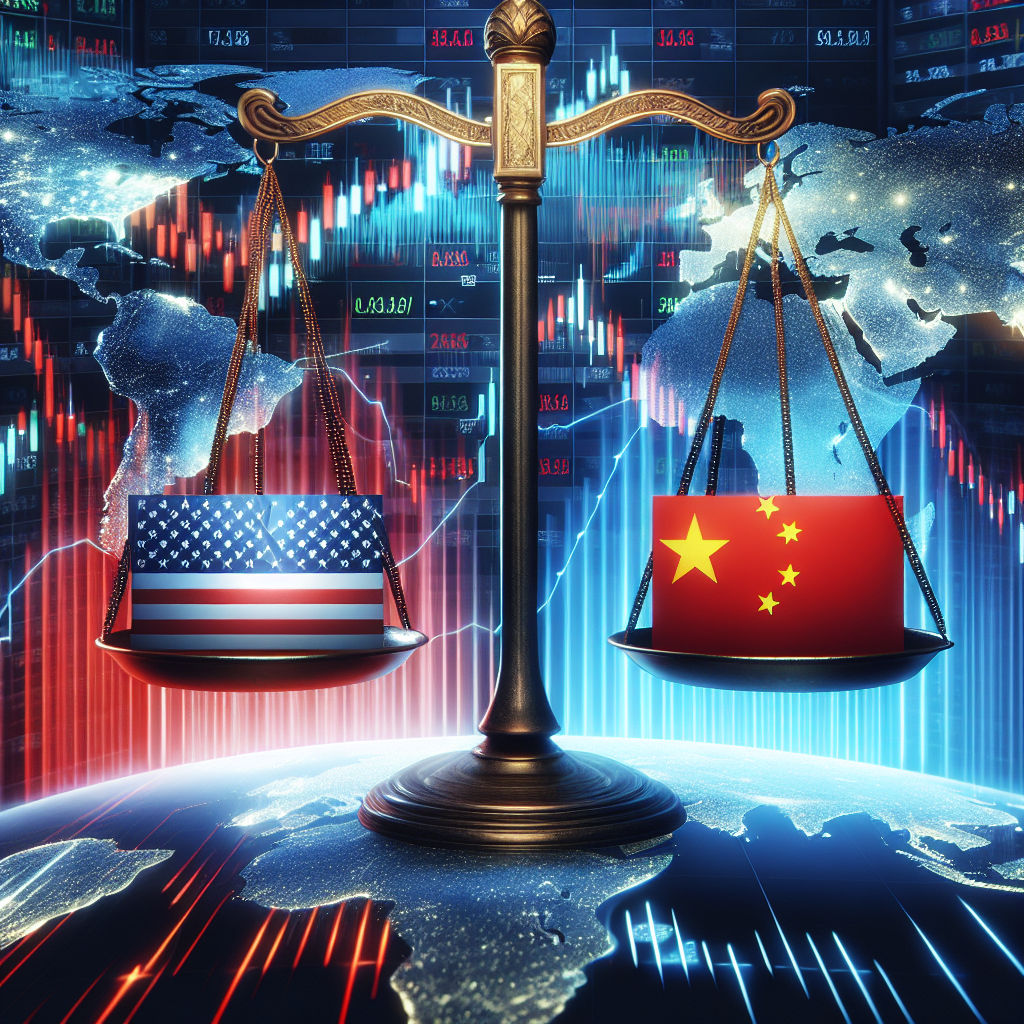Title: U.S. and China Strike Landmark Trade Deal
A New Era for Global Trade Stability
The recent announcement of a landmark trade deal between the United States and China marks a pivotal moment in international relations and economic policy. This agreement, which involves both nations slashing tariffs by 115%, seeks to rectify years of economic imbalance and trade tension. While optimism surrounding the deal has sparked enthusiasm in global markets, it also brings forward complex implications for various sectors.
In this blog, we’ll delve into the details of the trade deal, its immediate impact on key industries, and the broader economic and geopolitical ramifications. Backed by the latest reports and market analysis, we’ll explore whether this development is truly a game-changer for global trade stability—or if it’s simply a temporary reset in an ongoing rivalry.
Understanding the U.S.-China Trade Deal
What Does the Agreement Entail?
The trade accord struck between the U.S. and China promises to be transformative. Both nations have agreed to reduce tariffs by an unprecedented 115%, a move aimed at fostering fairer trade practices and promoting bilateral economic growth. This deal seems to signify that the world's two largest economies are ready to put aside their past hostilities—at least for now.
China has committed to increasing imports of U.S. goods and services, including agricultural products, technology, and industrial equipment. Similarly, the U.S. has pledged to remove trade barriers on key Chinese exports, with a focus on technology and consumer goods. Together, these measures are designed to reduce the trade deficit and establish a more equitable economic partnership.
Why Now?
For years, the U.S.-China trade relationship has been steeped in tension. From tariff wars to intellectual property disputes, both nations have clashed over issues like technology transfers, market access, and production subsidies. However, it appears that mounting global economic challenges—including inflation, supply chain disruptions, and post-pandemic recoveries—may have pushed both sides to prioritize stability over conflict.
Immediate Market Reactions: Optimism and Caution
Positive Trends in European Markets
The ripple effects of the deal were almost immediate. Stock markets across Europe saw a surge, with China-exposed shares in sectors such as luxury goods, automotive, and technology enjoying significant gains. Companies like LVMH, Tesla, and Apple have all seen investor confidence grow, reflecting hopes of a robust rebound in cross-border trade.
At the same time, the tech sector is also riding the wave, as reduced tariffs on electronics and components may accelerate production costs for companies dependent on Chinese manufacturing.
Pharma Stocks Face Setbacks
On the flip side, the pharmaceutical sector has been hit by unrelated but concurrent developments. U.S. President Donald Trump’s announcement of an executive order reducing drug prices by up to 80% has sent pharmaceutical stocks plummeting. While this move is aimed at easing healthcare costs for American consumers, it has created uncertainty for drug manufacturers who fear shrinking profit margins.
For more insights into the volatile pharmaceutical sector, check out our related article: How Drug Price Cuts are Reshaping the Pharma Industry
Broader Implications for Geopolitics and Trade
A Path Toward Global Economic Balance?
While reducing tariffs is a welcome step, critics argue that it's just the tip of the iceberg. Trade relations between the U.S. and China extend beyond tariffs, encompassing issues like supply chain dependency, human rights controversies, and intellectual property rights. Whether this deal can address these deeper concerns remains to be seen.
Geopolitical Rivalry at Bay?
Although the trade agreement may temporarily cool tensions, it doesn’t erase the underlying geopolitical rivalry between the two powers. From competition in the tech sector to diverging ideologies, the larger question of U.S.-China relations requires more comprehensive solutions.
Related article: Will U.S.-China Relations Improve Under the New Trade Deal?
What Comes Next?
It’s clear that expectations surrounding this agreement are high. Analysts predict that sectors like green energy, semiconductors, and financial services may emerge as key beneficiaries if the deal holds steady. However, political factors, potential violations, or disagreements over enforcement mechanisms could derail the newfound progress.
For now, businesses and investors have reason to be cautiously optimistic. Policymakers and stakeholders must work collectively to ensure that the promises of this landmark deal pave the way for sustained economic cooperation.
Q&A: Top Questions About the U.S.-China Trade Deal
1. How will reduced tariffs impact consumers?
Lower tariffs often translate to reduced costs for imported goods, allowing consumers to enjoy lower prices on a variety of products, from electronics to luxury goods.
2. Will this deal impact small businesses in the U.S.?
Yes, small businesses relying on imports or exports could benefit from reduced costs and expanded market opportunities. However, certain sectors may face stiffer competition from Chinese imports.
3. Are there any risks involved in the agreement?
Potential risks include enforcement failures, geopolitical tensions resurging, or external factors like market volatility impacting the agreement's success.
4. How long will it take for the deal to show tangible results?
While market reactions have been swift, the full economic impacts may take months, if not years, to materialize as trade adjustments are implemented.
Conclusion: A Step Forward,with Caution
The U.S.-China trade deal is undoubtedly a monumental step toward fostering economic stability and global trade growth. Its success, however, depends on consistent enforcement, mutual cooperation, and a commitment to addressing the structural issues that have plagued U.S.-China relations for decades.
This is a moment of cautious celebration, not unbridled optimism. As businesses and governments alike navigate this new chapter, the world will be watching closely to see whether promises translate into progress.
To stay updated on similar economic trends and geopolitical developments, visit Reuters’ Trade Section.
Related Tags
#USChinaDeal #TradeAgreement #GlobalEconomy #MarketTrends #TariffsReduction #Geopolitics #EconomicGrowth
